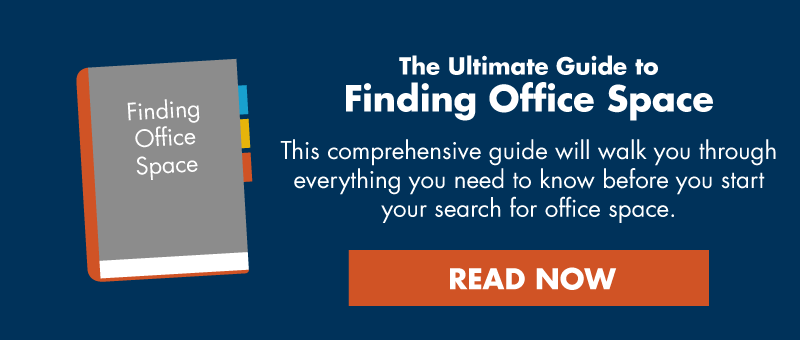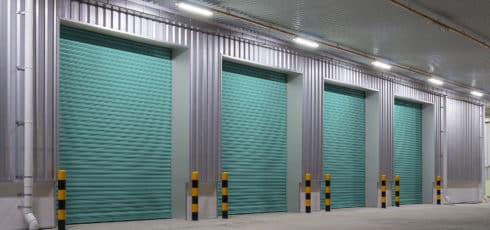When helping clients in their search for office space, two of the most common questions we hear from clients are “How long of a lease will I have to sign?” and “What is the typical commercial lease length?”
While there is no one answer to this question, there are standards in each market, as well as a number of factors, both internal and external, that can impact the lease term you will be able to negotiate.
Read Next: How Much Office Space Do I Need? (Calculator & Per Person Standards)
In this article, we will explain:
- How long is a typical commercial lease in Austin?
- When are longer leases required?
- When can you sign a shorter lease?
- Benefits of both shorter and longer leases
What Is the Typical Commercial Lease Length in Austin?
Because Austin is one of the most competitive and fastest-growing markets in the country, landlords are currently asking for commercial lease terms between three and ten years.
Typical commercial lease terms (or length of lease) will vary from market to market and are based on a number of factors, such as market conditions, current vacancies and upcoming developments.
Although these factors usually dictate the market standard for lease terms, each landlord may behave differently. Typically, landlords offer more concessions like additional TI allowance, free rent and more attractive rates in exchange for longer leases.
When Are Longer Commercial Leases Required?
Most landlords will prefer to have tenants sign a longer lease, as it gives them stability within a building.
The more competitive the market and the more concessions you ask them for, the more leverage the landlord has to demand a longer lease.
Tenant Improvements
Most new leases come with some amount of Tenant Improvement (TI) allowance.
Oftentimes, the dollar amount required to build out a space is larger than what the landlord initially offers.
If you need additional TI allowance dollars, a landlord may be more willing to offer these if you commit to a longer lease term in exchange. This way the landlord can recoup the additional tenant improvement dollars over the life of your lease.
Shell spaces, which lack interior walls, carpet, doors, and other basic features of a functioning office space, require higher TIs to finish out. Because of the higher TI requirement, most landlords require a longer lease commitment — typically seven or more years.
Because most new developments deliver interiors in shell condition, it is typical to see longer lease requirements in new construction.
Market Conditions
Market conditions also dictate lease terms landlords are willing to agree on.
In competitive markets like Austin where there are a number of companies opening offices and expanding, traditional landlords typically will not agree to a lease under three years.
When Can You Get a Shorter Commercial Lease?
Each time a tenant vacates a space, the landlord has to spend time and money to market the space as well as pay additional broker commissions and TIs. As a result, shorter leases can cost the landlord more than longer leases.
When a tenant moves out, there is risk associated with the amount of time a suite may sit vacant. The shorter the lease, the more often this risk occurs.
These factors can cut into the profitability of the building and are the main reasons why landlords try to avoid signing short leases.
There are, however, a few situations in which a landlord may be willing to compromise.
Vacancy and Size
A landlord may be willing to negotiate a shorter lease for a less desirable space that has been sitting vacant for some time or for smaller suites.
Spec Suites
If you find a spec suite that is move-in ready, requiring little to no tenant improvement, a landlord may be willing to negotiate and agree to shorter lease terms.
Spec suites can be a great alternative for companies who need to move in quickly, do not want to spend time or money customizing the space, and who require flexible lease terms.
Finally, a landlord may be open to a tenant signing a shorter lease, in return for a higher rental rate.
Read Now: What Are Spec Suites? (Definition, Pros, and Cons for Tenants)
Alternative Short-Term, Flexible Commercial Leases
Coworking
If you are a start-up or rapidly growing small to midsize company, you likely need a shorter lease to maintain flexibility, but also want a cool, Class A office in a prime location to help you attract top talent.
While short leases are uncommon in the Austin market, especially at Class A properties, the recent emergence of coworking spaces, such as WeWork and Capital Factory, has helped bridge this gap. With the number of coworking spaces in Austin growing, coworking has become a popular alternative for companies with fast-paced growth.
Many coworking spaces are located in premiere office buildings and have bespoke, creative finish-outs. They typically offer month-to-month agreements which can help growing companies manage their expansion and maintain flexibility until they are ready to commit to a longer lease.
Sublease Space
Subleasing is another great option for tenants requiring short-term leases. Not only do subleases often offer shorter terms, but sublease space is also typically available at a discount to the rates that the building’s landlord is offering.
A sublease agreement should be negotiated by an experienced broker to ensure that the subtenant is protected just as if it were a direct lease.
Long vs. Short-Term Commercial Leases
Benefits of a Long-Term Lease
Lock in Favorable Rates
If you anticipate the market to continue to improve and rental rates to climb, it can be to your advantage to sign a longer lease and lock in today’s rental rates, rather than renew at a future, potentially higher rate.
This is particularly true for established, stable companies that have clearly defined growth projections and prefer to lock in their rate.
Read Now: How Much Does It Cost to Lease Office Space in Austin, Texas? (Rental Rates, Pricing)
Avoid Relocation Costs
By signing a longer lease and staying in one office for an extended period of time, a company can save on various relocation costs, including:
- Build-out costs
- Technology/infrastructure expenses
- Lost productivity caused by downtime
- Moving expenses
- Furniture expenses
To find out how much it costs to relocate your office space, read our article What Are the All-In Costs of Relocating My Office?
Negotiate Larger Concessions
If term flexibility is not a top priority for your company, you can often leverage a longer lease term to negotiate for more concessions from the landlord.
Since the landlord has a longer window to amortize deal costs, they can typically get more aggressive with concessions that may include: a larger TI allowance, free rent, building signage rights, better rental rates, more favorable non-economic terms like expansion rights, and more.
Read Now: What Are Typical Tenant Improvement Allowances in Austin, Texas?
Benefits of a Short-Term Commercial Lease
Maintain Flexibility
You might want the flexibility to easily expand or downsize. Then, a longer-term lease may be a hindrance to your business’s growth.
If the space no longer works for your company, but you are still legally obligated to lease the space, you may be forced to incur additional expenses via subleasing or terminating the lease.
Your company may have growth plans and you might want to incorporate expansion rights into the lease document.
Conclusion
No matter what your lease term needs are, there are a number of ways to structure a lease to best fit your business’s goals and objectives.
If you would like to know more about commercial lease lengths in Austin or to discuss your leasing options, please contact one of our experienced tenant brokers at AQUILA.
If you’re ready to start your search for office space, read our Ultimate Guide to Finding Office Space.

Popular Articles:
- How Much Office Space Do I Need? (Calculator & Per Person Standards)
- How Much Does It Cost to Lease Office Space in Austin, Texas? (Rental Rates, Pricing)
- 5 Crucial Steps for Finding the Perfect Office Space to Lease














